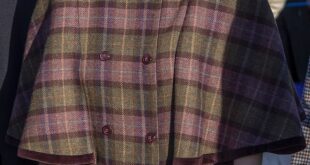Plans for a second runway at East Midlands Airport have not been not ruled out, even though there is more than enough existing capacity.
Politicians have been updated on the latest situation at the Castle Donington airport, on the Leicestershire/Derbyshire border – including plans for a freeport and further growth in freight shipments.
Neil Robinson, the corporate social responsibility and future airspace director for parent company Manchester Airports Group (MAG), provided a briefing to members of South Derbyshire District Council.
While passenger flights have been devastated by global lockdowns – down 90 per cent at the start of the year – the airport has seen a big rise in cargo-only planes. The airport is now a major hub for dedicated express freight operators such as DHL, UPS, FedEx and the Royal Mail.
Expansion within the airport has been coupled with the growth of SEGRO’s vast East Midlands Gateway distribution park to the north and the new Maritime Rail Freight Interchange linking the park to the rail network. The rise in internet shopping has also added to freight movements.
When asked about potential future plans for a second runway, Mr Robinson said London Stansted – which is part of the same group – had managed to increase capacity from 43 million to 50 million passengers without an additional runway.
He said East Midlands, currently on 4.8 million passengers a year, had “ample capacity to grow for the foreseeable future”.
Mr Robinson said: “Never isn’t a word I would use but there is no need for one (a second runway) for the foreseeable future.
“There is room for a reasonable increase in annual passengers without the need for a second runway.”
He said that land capacity for airports is a key issue, but that at the East Midlands site the current car parking area could be used to cater for some expansion.
Mr Robinson said a key issue when looking to add an extra runway is the distance between to the terminal, with passengers wanting to be as close as possible for a quick departure.
He was also asked about the planned East Midlands Freeport, aimed at bringing billions of pounds of investment and thousands of jobs to the region, with the airport as an anchor for the Government-backed project. It is still awaiting final sign off from Whitehall.
Mr Robinson said: “We are expecting East Midlands Airport to grow. The passenger numbers have been more challenging and slower to recover than we would have hoped, but we expect freight to grow pretty strongly.
“It is difficult, the freeport, when East Midlands Airport grows it helps the whole economy and the airport grows if the economy is growing, with or without the freeport. I wouldn’t expect the freeport to really change what we do.
“If our services grow it will grow the national economy. It is very early days at the moment [for the freeport plans] and we expect East Midlands to get busier with freight, we are in a little bit of flux.”
Mr Robinson was questioned by district councillors Amy Wheelton, Neil Atkin and Martin Fitzpatrick on the issues posed by noise from the airport.
He said that the airport has been pushing for years to make it increasingly harder for older and more noisy aircraft to fly from the site – with additional hurdles in place for night-time flights.
Mr Robinson said that due to the airport’s almost unique focus on freight, particularly during the pandemic, the amount of freight cargo it was handling was up 15 to 20 per cent.
Mr Robinson said during lockdown and particularly the first wave of Covid-19 airline companies needed to fly in huge amounts of personal protective equipment and other supplies as often and as quickly as possible.
This, he said, saw more airlines willing to pay the added costs of flying at night and in older or more noisy aircraft which, councillors said, had been noticed by residents in the flight paths.
He said 60 per cent of the airport’s freight cargo was flown between 11pm to 7am due to the need for have deliveries to ready first thing in the morning and to make way for passenger flights in daytime hours.
Mr Robinson said 99.9 per cent of night flights met current noise standards.
Source link



